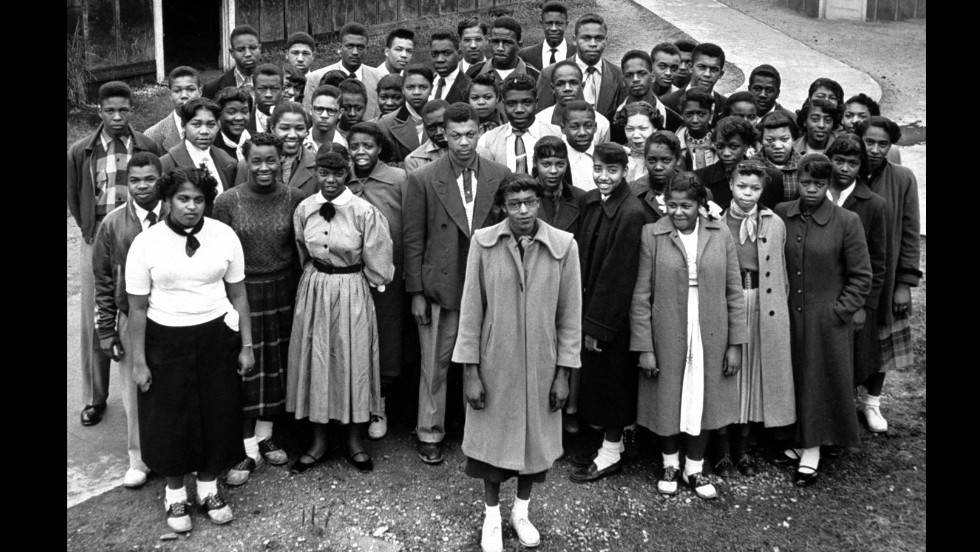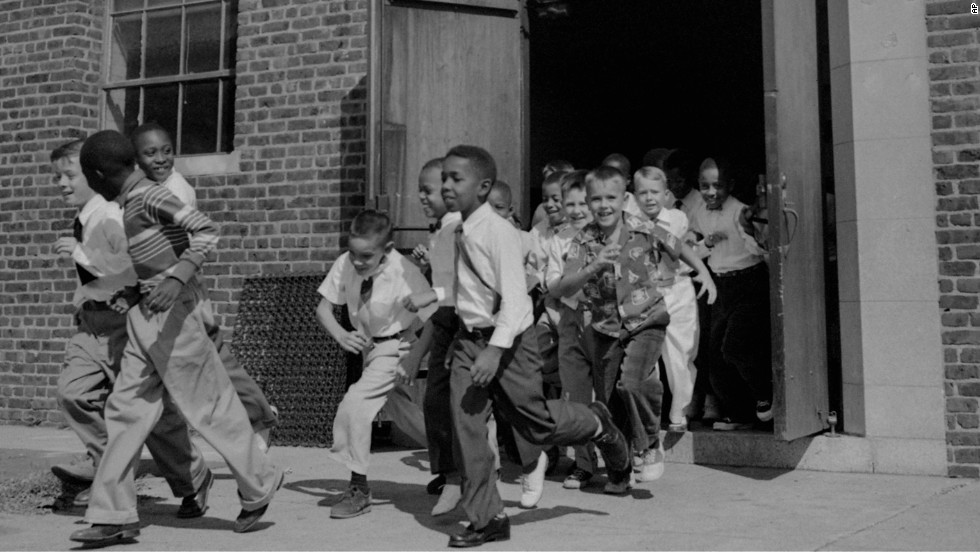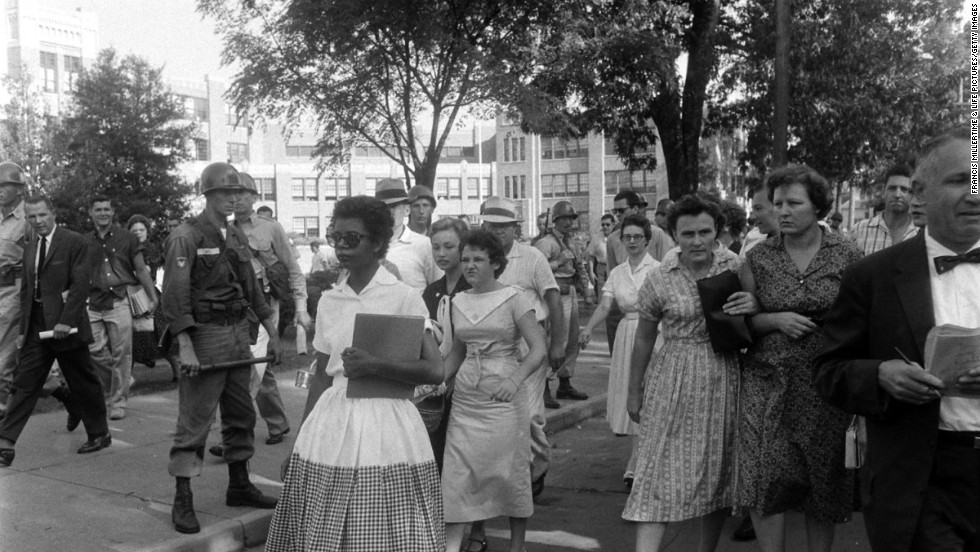(CNN)Here's what you need to know about the landmark US Supreme Court ruling, Brown v. Board of Education.
About the Case
The first plaintiff was Oliver Brown, an African American welder and assistant pastor, who brought the case against the Topeka Board of Education for not allowing his 9-year-old daughter, Linda Brown, to attend Sumner Elementary School, an all-White school near their home.
In 1954, there were four African American schools and 18 white schools in Topeka.
Four similar cases were combined with the Brown complaint and presented to the Supreme Court as Brown v. Board of Education. The full name of the case is Oliver L. Brown et al v. Board of Education of Topeka, Shawnee County, Kansas, et al.
Thurgood Marshall, the NAACP's Special Counsel and lead counsel for the plaintiffs, argued the case before the Supreme Court.
The Supreme Court ruling decreed that schools should be desegregated "with all deliberate speed" and that the "separate but equal" doctrine violated the 14th Amendment of the US Constitution, which states that no citizen can be denied equal protection under the law.
Timeline
1849 - Roberts v. Boston challenges the system of separate city schools for children based upon their race.
1896 - The Supreme Court rules in Plessy v. Ferguson that a Louisiana statue requiring separate but equal railroad cars for African American and White passengers did not conflict with the 13th and 14th Amendments. This case led to the "separate but equal" doctrine and the Jim Crow laws regarding segregation of other facilities for public use (parks, restaurants, etc.).
Summer/Fall 1950 - The NAACP forms a legal team for the case.
-The NAACP brings a class-action suit against the Topeka Board of Education.
-Thirteen groups of parents and their 20 children are represented in the suit.
-All of the parents had attempted to enroll their children in White-only schools, but were denied, thus creating the basis for the suit.
-The NAACP brings a class-action suit against the Topeka Board of Education.
-Thirteen groups of parents and their 20 children are represented in the suit.
-All of the parents had attempted to enroll their children in White-only schools, but were denied, thus creating the basis for the suit.
February 28, 1951 - The Brown complaint is filed with the US District Court of Kansas in Kansas City.
August 1951 - Kansas District Court rules segregation is not illegal.
August 1951 - The NAACP files an appeal of the Kansas ruling to the Supreme Court. Joining in the appeal are cases from Delaware, Washington, Virginia and South Carolina. The case is now known as Brown v. Board of Education.
December 9-11, 1952 - The Supreme Court hears arguments in Brown v. Board of Education.
May 17, 1954 - The Supreme Court announces its ruling, "separate educational facilities are inherently unequal;" overturns Plessy v. Ferguson, Jim Crow laws and the separate but equal doctrine. The ruling strikes down the legal basis for segregated classrooms in Kansas and 20 other states.
May 31, 1955 - The Supreme Court hands down Brown II, a ruling meant to outline the process of school desegregation.
May 4, 1987 - Monroe Elementary School becomes a National Historic Landmark, as it was the school Linda Brown attended.
1991 - The Trust for Public Lands buys Monroe Elementary School.
October 26, 1992 - Congress designates Monroe Elementary School a National Historic Site, making it a national park.
1993 - The Trust for Public Lands donates the school to the National Park Service.
September 19, 2001 - President George W. Bush signs H.R. 2133 into law, creating the "Brown v. Board of Education 50th Anniversary Commission."
May 17, 2004 - Marks the 50th anniversary of the law and the grand opening of the Brown v. Board of Education National Historic site at Monroe Elementary School.
March 25, 2018 - Linda Brown, who was at the center of the Brown v. Board of Education case that ended segregation in US schools, dies in Topeka, Kansas at the age of 75.
2018 - "Recovering Untold Stories: An Enduring Legacy of the Brown v. Board of Education Decision," a book of narratives from the plaintiffs in the consolidated cases or their families is published.






![One of the key pieces presented against segregation was psychologist Kenneth Clark's "Doll Test" in the 1940s. Black children were shown two dolls, identical except for color, to determine racial perception and preference. A majority preferred the white doll and associated it with positive characteristics. The court cited Clark's study, saying, "To separate [African-American children] from others of similar age and qualifications solely because of their race generates a feeling of inferiority as to their status in the community that may affect their hearts and minds in a way unlikely ever to be undone."](http://cdn.cnn.com/cnnnext/dam/assets/140516160638-08-brown-horizontal-large-gallery.jpg)






























